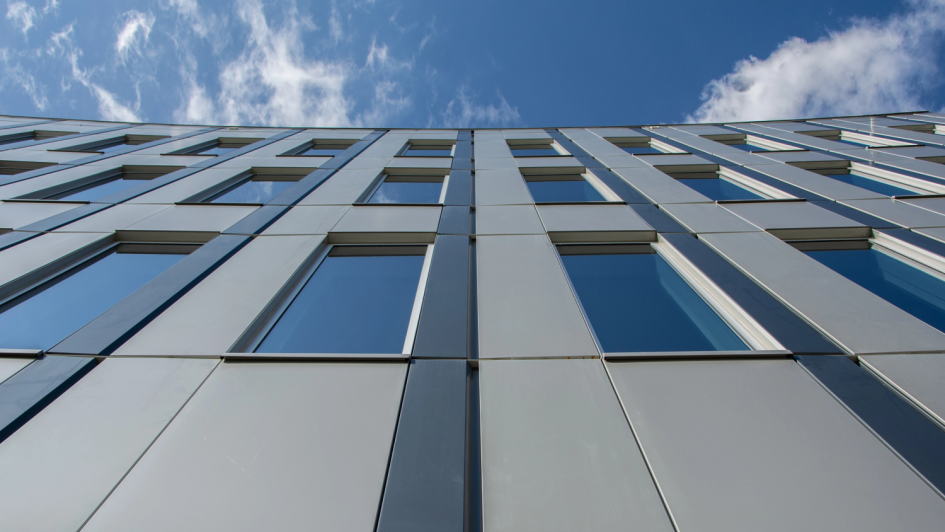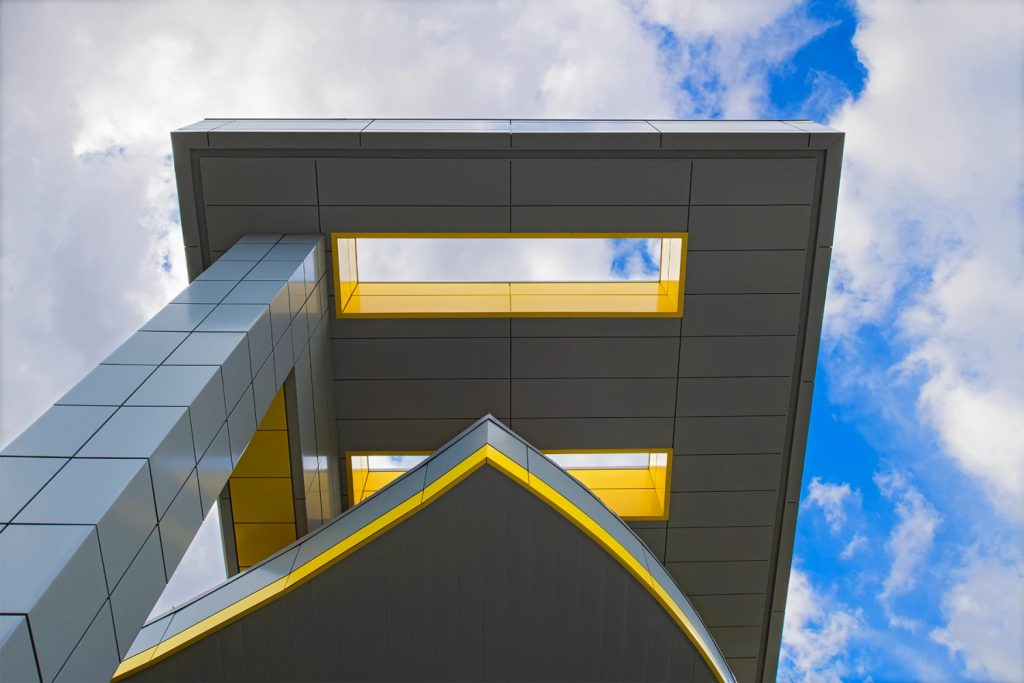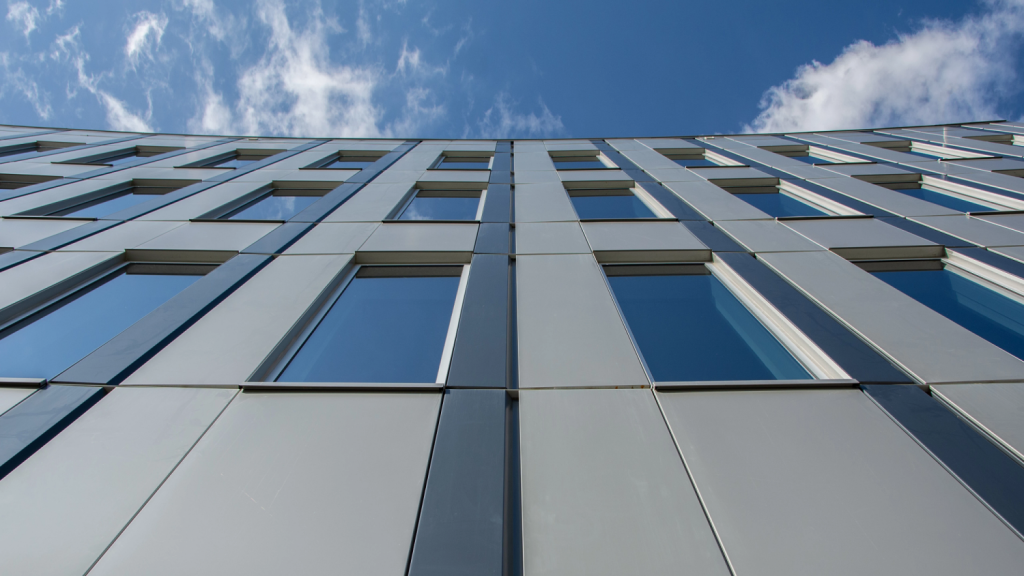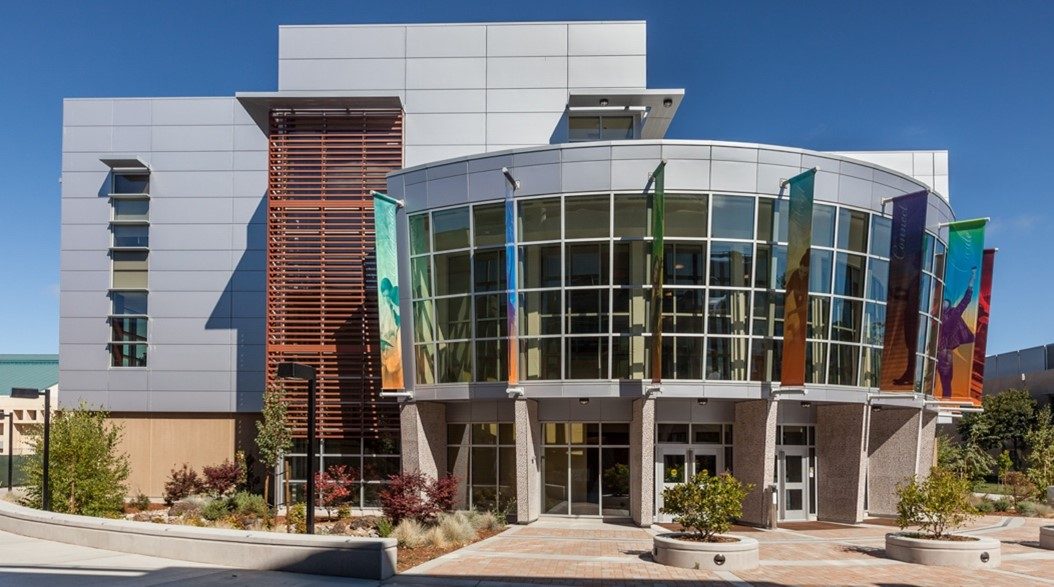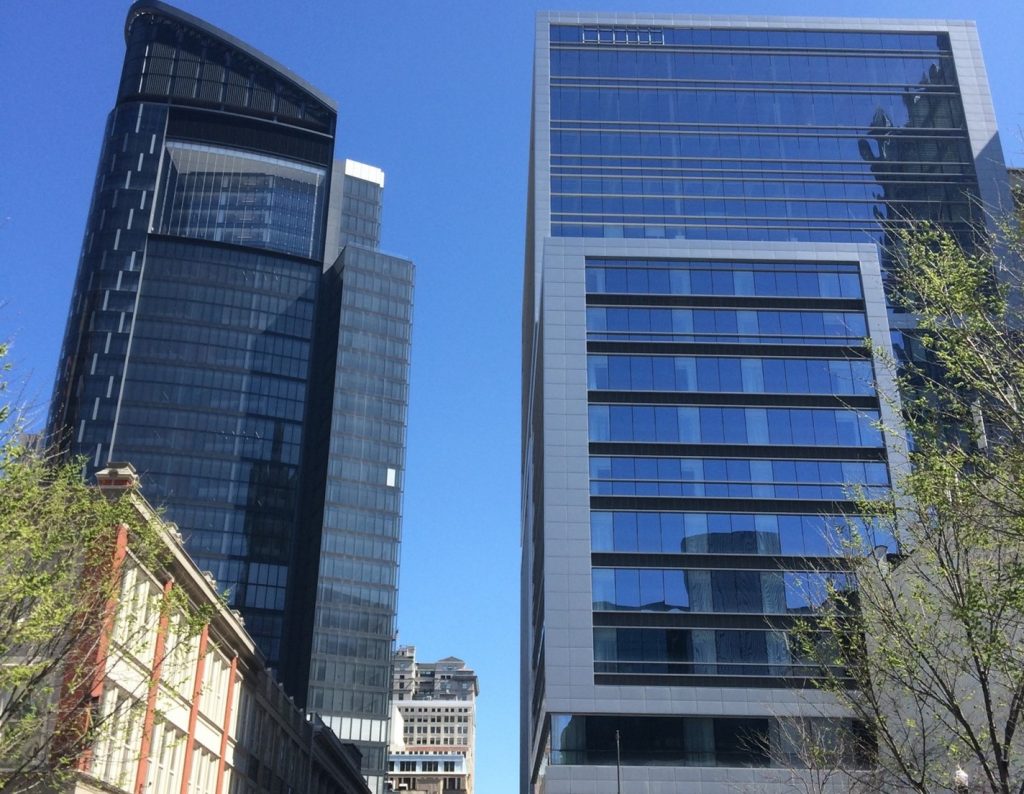Sustainability isn’t just about being green and energy-efficient anymore. It’s a matter of responsibility and transparency in every part of building materials, from mining and manufacturing to delivery, installation and actual product life. As more and more chemicals are identified as being potentially toxic, carcinogenic, or otherwise hazardous to health or the environment, today’s customers demand to know what’s in their building materials.
Full Transparency
That’s why the International Living Future Institute (ILFI) developed the Red List, a comprehensive listing of hazardous chemicals which manufacturers, construction companies, designers and architects should avoid. Though there are no laws eliminating Red List chemicals yet, now is the time to get ahead of the ball.
As CENTRIA Product Manager Julie Schessler pointed out, “Educational facilities and large corporations tend to be more focused on environmental impact these days. A lot of corporations and institutions have environmental plans and commitments to decrease their carbon emissions contribution to pollution over the next five, ten or twenty years.” This trend towards healthy environments includes Red List chemicals, because they can be hazardous to the health of people within buildings or the environment outside them. End-users and customers are likely to demand Red List-free materials long before legal mandates require it.
The Red List
While it includes well-known and obvious hazards like asbestos, BPA, lead and mercury, the Red List also extends all the way to more common and ubiquitous compounds and chemicals, like PVC, wood treatments and VOCs. The list details more than 800 chemicals to be avoided, but it’s also subject to ongoing additions, deletions, and changes. These are the current umbrella categories:
The Red List
Alkylphenols and Related Compounds
Antimicrobials (marketed with a health claim)
Asbestos Compounds
Bisphenol A (BPA) and Structural Analogues
California-Banned Solvents
Chlorinated Polyethylene (CPE) and Chlorosulfonated Polyethlene
Chlorinated Polyvinyl Chloride (CPVC)
Chlorobenzenes
Chlorofluorocarbons (CFCs)
Chloroprene (Neoprene)
Chlorosulfonated Polyethylene (CSPE)
Chromium VI
Creosote
Formaldehyde (added)
Halogenated Flame Retardants (HFRs)
Hydrochlorofluorocarbons (HCFCs)
Organotin Compounds
Pentachlorophenol Alkylphenols
Perfluorinated Compounds (PFCs)
Petrochemical Fertilizers and Pesticides
Phthalates (Orthophthalates)
Polychlorinated Biphenyls (PCBs)
Polycyclic Aromatic Hydrocarbons (PAHs)
Polyvinyl Chloride (PVC)
Polyvinylidene Chloride (PVDC)
Short-Chain and Medium-Chain Chlorinated Paraffins
Toxic Heavy Metals
Arsenic
Cadmium
Chromium
Lead (added)
Mercury
Volatile Organic Compounds (VOCs) in Wet-Applied Products
Wood Treatments Containing Creosote, Arsenic or Pentachlorophenol
Our Green Commitment
At CENTRIA, we’ve long been committed to sustainable building practices and materials, and have kept a close eye on the Red List and any materials we use that may contain Red List chemicals. Luckily, metal construction is mostly free from Red-Listed substances. However, when it’s possible to reduce or eliminate Red List chemicals from our products – such as halogenated flame retardants (HFRs) – we strive to do so.
HFR 101
Halogenated flame retardants (HFRs) are added to building products throughout the construction materials industry to inhibit ignition or flame spread in the event of a fire. But they’re also known to contain chlorine and bromine – classified as persistent bioaccumulative toxins, which can accumulate in organisms and the building environment, possibly posing health risks. So we endeavored to replace HFRs from our Formawall Dimension Series products. Launched more than 20 years, Formawall previously used HFRs in its insulating foam core to reduce fire spread risk, but CENTRIA wanted to push the envelope further and find a healthier, more sustainable alternative. This was a voluntary decision, and we were the first in the industry to take it on.
New & Improved
In 2018, we successfully re-introduced the Foam Formawall Dimension Series – free from any Red List chemicals in the panel itself, including HFRs. But can an HFR-free foam still perform well in fire tests? The answer is a resounding “Yes!” The new formulation not only meets National Fire Protection Association (NFPA) 285, but surpasses it in every assembly configuration, including both steel stud and steel tube construction. It also meets FM 4882 certification at the highest level for smoke-sensitive environments. “Clean room grade is the highest grade that you can achieve,” said Schessler, “and that's what Formawall achieved.”
Better Than Ever
The new HFR-free Formawall configuration retained all the features that set it apart from the competition. It allows unprecedented design freedom with a variety of shapes and colors with unmatched performance while consolidating six wall components into one product – exterior rainscreen, air and moisture barrier, and thermal insulation. It can be quickly and easily installed in vertical or horizontal orientations, with concealed clips, fasteners, and sealants with insulated metal joints. The updated formula is factory foamed in-place, minimizing the potential for gaps within the panel, and integrates seamlessly with most glass wall, window and louver systems – including Formavue Windows.
Formawall now also comes with a health product declaration (HPD) through the HPD Collaborative, can earn credits towards the Leadership in Energy and Environmental Design (LEED) program, and is UL-listed for both US and Canada. When combined with Fluorofinish Pure, a chromium- and phthalate-free architectural finish system, the panel is entirely free of Red List chemicals – so you can feel confident that you’ve done right by your customer as well as anyone entering the building.
The re-imagined Formawall Dimension Series is just another example of CENTRIA’s commitment to do right by our customers and the environment – and another in a long list of EPD-certified CENTRIA products. To learn more about Formawall or other ways we’re developing long-term solutions to ecological, health and safety concerns, get in touch with a CENTRIA Representative near you.
